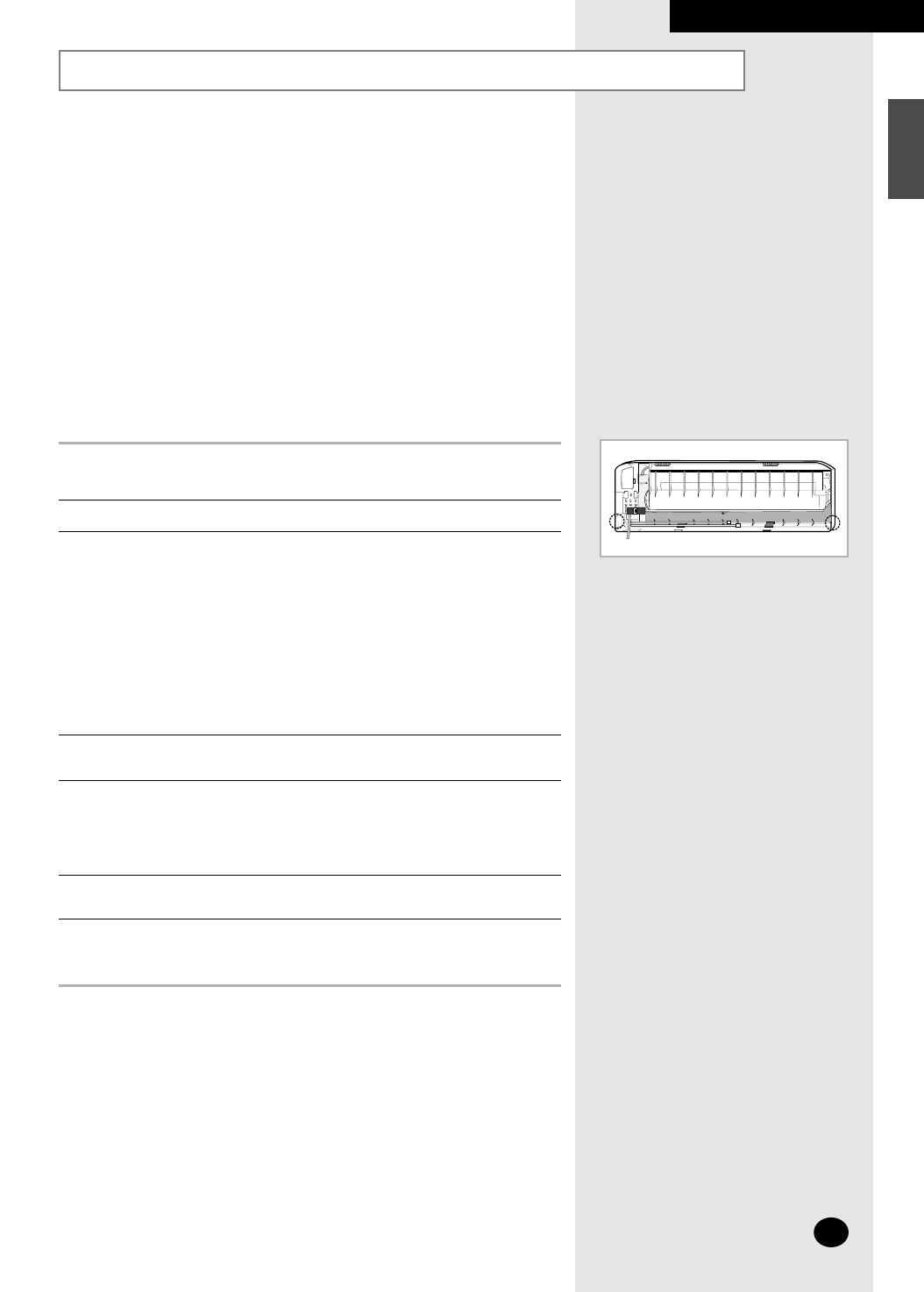
E-35
ENGLISH
Installing and Connecting the Indoor Unit Assembly Piping
INSTALLING THE INDOOR UNIT
There are two refrigerant pipes of different diameters:
◆ A smaller one for the liquid refrigerant
◆ A larger one for the gas refrigerant
A short length of piping is already fitted to the air conditioner. You
must extend this piping using assembly piping (optionally supplied).
The connection procedure for the refrigerant piping varies according
to the exit position of the piping from the indoor unit, as seen when
facing the air conditioner in position on the wall:
◆ Right (A)
◆ Left (B)
◆ Rear
1 With a knife, cut out the appropriate knock-out piece on the rear of the
indoor unit (unless you are connecting directly from the rear).
2 Smooth the cut edges.
3 Remove the protection caps on the pipes and connect the assembly piping
to each pipe, tightening the nuts, first manually and then with a wrench,
applying the following torque.
Pipe Outer Diameter Torque
Liquid refrigerant 6.35 mm(1/4˝) 160kg•cm(11.6ft•lb )
Gas refrigerant 9.52 mm(3/8˝) 300kg•cm(21.8ft•lb )
Gas refrigerant 12.70 mm(1/2˝) 500kg•cm(36.4ft•lb )
Gas refrigerant 15.88 mm(5/8˝) 700kg•cm(50.6ft•lb )
➢
If the piping must be shortened or extended, refer to page 36.
4 Cut off any excess foam insulation.
5 If necessary, bend the pipe round, along the bottom of the indoor unit and
out through the appropriate hole, taking care to ensure that:
◆ The piping does not jut out from the rear of the indoor unit
◆ The bending radius is 100mm (4inch) or more
7 For further details on how to connect up to the outdoor unit and purge the
circuit, refer to page 41.
➢ The piping will be insulated and fixed permanently into
position once the whole installation has been tested for
gas leaks; refer to page 43 for further details.
6 Pass the piping through the hole in the wall.
A
B


















